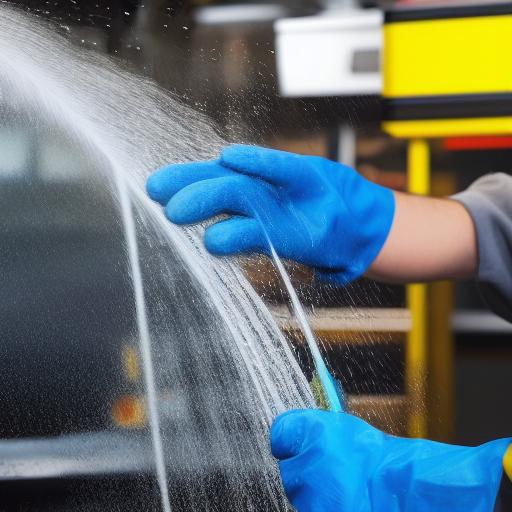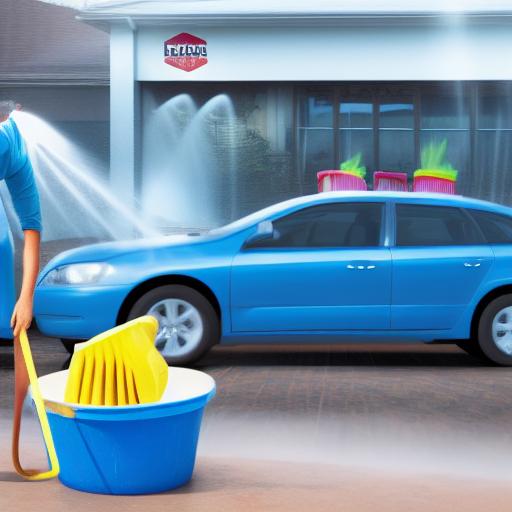
Introduction: The Importance of Car Wash Equipment Maintenance
A well-maintained car wash is a profitable car wash. Neglecting your equipment leads to increased repair costs, unexpected downtime, and a decline in the quality of your services. This comprehensive guide will walk you through a preventative maintenance program designed to keep your car wash running smoothly and efficiently. We’ll cover everything from high-pressure washers and automated systems to detail bays and vacuum cleaners. Understanding the “why” behind maintenance is crucial – it’s an investment, not an expense. Regular maintenance translates to less costly repairs in the long run, preventing catastrophic failures and maximizing your equipment’s lifespan.
Part 1: Preventative Maintenance – Your First Line of Defense
Preventative maintenance is the cornerstone of a successful car wash operation. It involves regular inspections, cleaning, and minor adjustments to prevent major breakdowns. This proactive approach significantly reduces downtime and extends the life of your valuable equipment.
1.1 High-Pressure Washers: The Heart of Your Operation
High-pressure washers are the workhorses of any car wash. Regular maintenance is paramount.
- Daily Check: Inspect hoses for kinks, cracks, or leaks. Check the pressure gauge to ensure it’s within the recommended range. Clean the nozzle and filter to prevent clogging.
- Weekly Check: Inspect the pump for leaks or unusual noises. Top up the oil level (if applicable) according to the manufacturer’s instructions. Flush the system with clean water to remove any detergent residue.
- Monthly Check: Perform a thorough inspection of all components, including the motor, pump, and unloader valve. Lubricate moving parts as needed. Consider professional servicing at this stage for more complex aspects.
1.2 Automated Systems: Keeping the Machines Rolling
Automated car washes require more specialized maintenance.
- Daily Check: Inspect the track system for debris and obstructions. Ensure the brushes are properly aligned and free of damage. Check sensors for proper function.
- Weekly Check: Lubricate moving parts of the conveyor system. Clean the brushes thoroughly using specialized cleaners. Inspect the chemical delivery system for leaks or blockages.
- Monthly Check: Check the drive chains and sprockets for wear. Inspect the electrical connections and control panels. Consider professional service for complex issues like PLC programming adjustments.
1.3 Detail Bays and Vacuum Cleaners: Maintaining a Spotless Finish
Detail bays and vacuum cleaners also require regular upkeep to ensure their longevity.
- Daily Check: Empty the vacuum canister and check the filters for blockages. Inspect hoses for damage and leaks. Wipe down surfaces to prevent build-up.
- Weekly Check: Check vacuum motor and belts for wear. Change filters. In detail bays, ensure adequate water supply and drainage.
- Monthly Check: Inspect electrical connections and cords in both vacuum cleaners and detail bay equipment. Lubricate moving parts.
1.4 Chemical Management: Precise Dispensing and Storage
Proper chemical storage and handling are crucial for efficiency and safety.
- Daily Check: Ensure all chemicals are properly labeled and stored securely. Check levels and replenish as needed.
- Weekly Check: Inspect storage tanks for leaks or corrosion. Clean up any spills immediately.
- Monthly Check: Verify chemical concentrations using appropriate testing equipment. Rotate stock to prevent expiration.
Part 2: Troubleshooting Common Car Wash Equipment Problems
Even with regular preventative maintenance, problems can occur. Knowing how to quickly identify and address these issues minimizes downtime.
2.1 High-Pressure Washer Issues: Diagnosing the Problems
- Low Pressure: Check for clogged nozzles, leaks in hoses or pump, or low water supply.
- Leaking Pump: Inspect seals and gaskets. May require professional repair or pump replacement.
- Motor Overheating: Check for proper ventilation and ensure the motor is not overloaded.
2.2 Automated System Troubles: Addressing Common Malfunctions
- Conveyor System Issues: Check for obstructions, damaged track, or problems with the drive mechanism.
- Brush Problems: Replace worn or damaged brushes. Ensure proper alignment.
- Sensor Malfunctions: Test sensors and replace faulty ones.
2.3 Detail Bay and Vacuum Problems: Quick Fixes and Solutions
- Vacuum Loss of Suction: Check for clogged filters, damaged hoses, or blockages in the canister.
- Detail Bay Water Issues: Check for leaks in plumbing or water supply problems.
- Electrical Issues: Inspect wiring for damage and ensure proper connections.
Part 3: Scheduling Maintenance: A Preventative Calendar
A structured maintenance schedule is crucial. Consider creating a calendar with tasks and frequencies based on your equipment and usage. This will streamline your maintenance efforts and prevent overlooking important tasks.
- Daily: Quick inspections, cleaning, and minor adjustments.
- Weekly: More thorough inspections, cleaning of filters, and lubrication.
- Monthly: Detailed inspections, testing of chemical levels, and preventative actions.
- Quarterly: More intensive cleaning, checks for wear and tear, and professional servicing of critical components.
- Annually: Major overhauls, professional servicing, and potential component replacements.
Part 4: Record Keeping: Tracking Your Maintenance Efforts
Maintaining detailed records of all maintenance activities is essential. This helps track equipment performance, identify recurring issues, and provides valuable data for budgeting and decision-making. A simple logbook or spreadsheet can suffice, documenting the date, task performed, any parts replaced, and any issues encountered.
Part 5: The Role of Professional Servicing
While preventative maintenance is vital, professional servicing is equally important. A qualified technician can perform more complex tasks, diagnose problems beyond your expertise, and ensure your equipment is operating at peak efficiency. Schedule regular professional servicing to address intricate components and prevent major breakdowns.
Part 6: Learn Business: Supporting Your Car Wash Success
Running a successful car wash involves more than just maintaining equipment. Efficient management, financial planning, and marketing strategies are critical for growth. Learn Business (https://learn-business.org/) offers a wealth of resources, including practical guides, templates, and expert advice to support your business endeavors. They provide valuable tools for financial management, marketing strategies, and operational efficiency, complementing your equipment maintenance efforts and ensuring the overall success of your car wash business. They offer tailored guidance and templates that can specifically help you manage your car wash business more effectively, from optimizing your pricing strategy to creating effective marketing campaigns. Leveraging their resources can significantly contribute to your car wash’s profitability and longevity.
Conclusion: Investing in Maintenance, Investing in Your Future
Investing in car wash equipment maintenance isn’t just about keeping your machines running; it’s an investment in the long-term success and profitability of your business. By following the preventative maintenance strategies outlined in this guide and utilizing resources like Learn Business, you can ensure your car wash operates efficiently, provides consistent high-quality services, and maximizes its return on investment. Regular maintenance leads to reduced downtime, lower repair costs, and a longer lifespan for your equipment, ultimately contributing to a more successful and sustainable car wash operation. Remember, a well-maintained car wash is a profitable car wash.

Leave a Reply